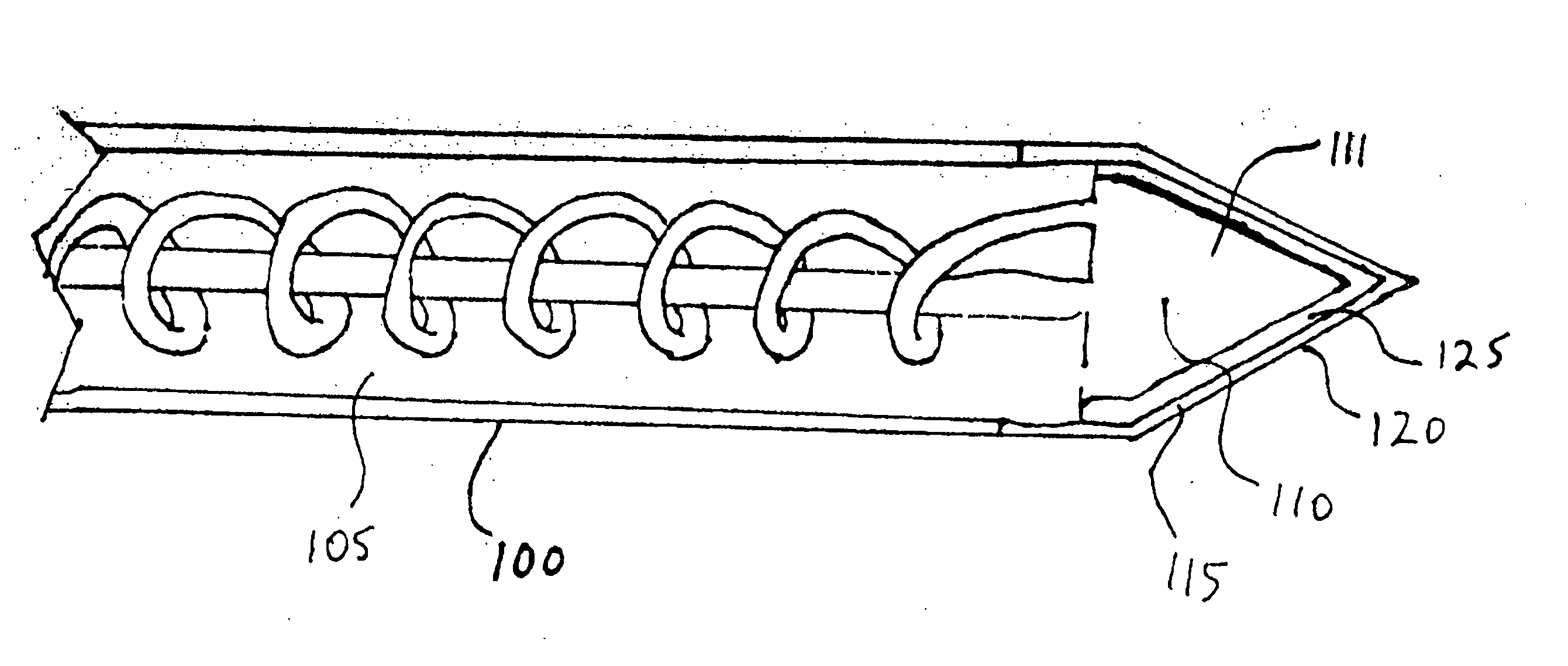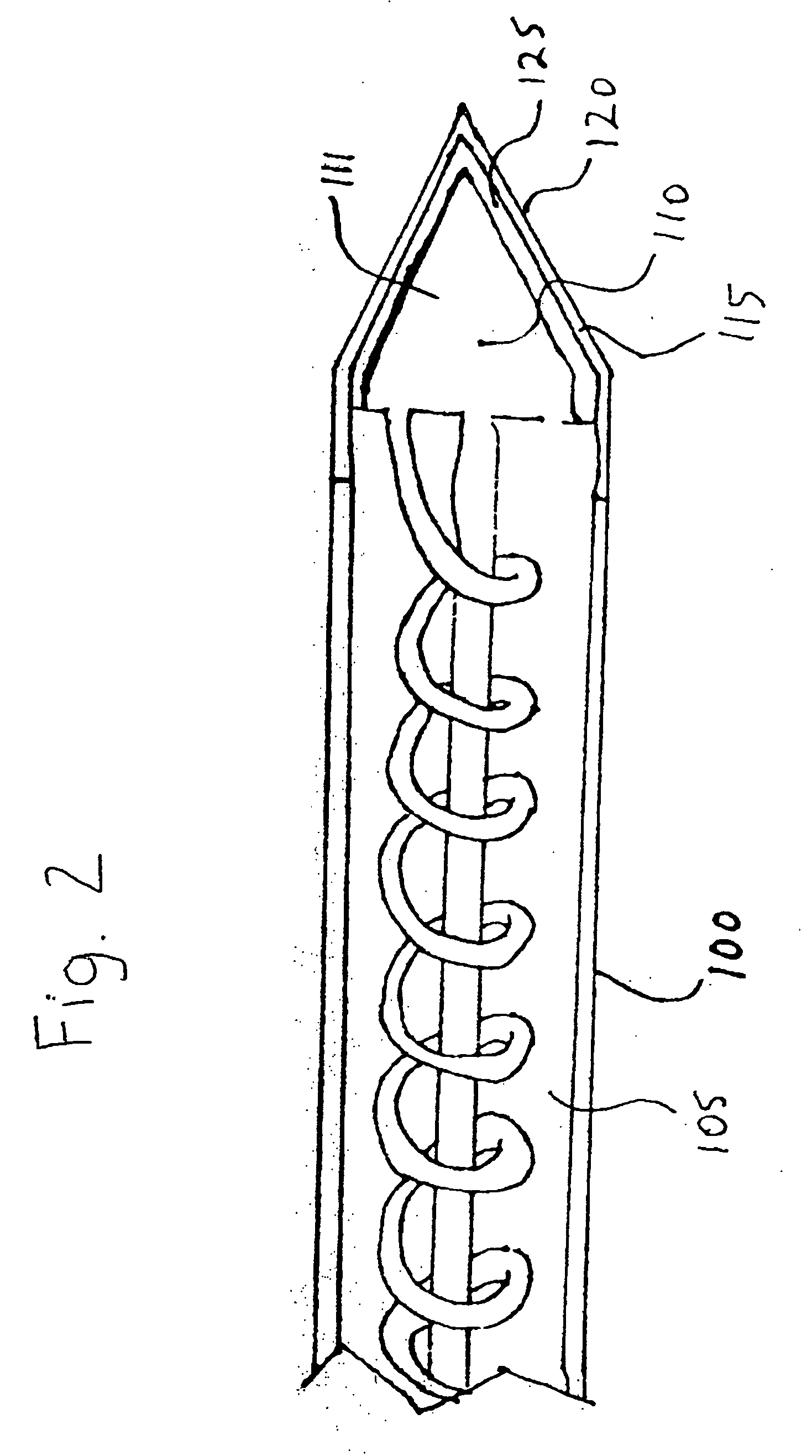Cryoprobe with reduced adhesion to frozen tissue, and cryosurgical methods utilizing same
a cryoprobe and tissue technology, applied in the field of cryoprobes, can solve the problems of inefficient use of time for busy surgeons, inability to remove a cryoprobe from the patient's body, and the tissue tendencies of the patient, so as to achieve rapid removal from the body, rapid displacement within the body, and easy and rapid freeing during thawing
- Summary
- Abstract
- Description
- Claims
- Application Information
AI Technical Summary
Benefits of technology
Problems solved by technology
Method used
Image
Examples
Embodiment Construction
[0066] The present invention is of cryoprobes operable to cool body tissues to below-freezing temperatures without thereby creating strong bonding between frozen tissues and a cooling surface of the cryoprobe. Specifically, cryoprobes here disclosed enable to displace cryoprobes during cryosurgery without thawing of tissue or with only minimal thawing of tissue. Cryoprobes here disclosed also enable to freeze tissues using a moving cryoprobe, thereby enabling accurate tailoring of a cryoablation volume to a cryoablation target by use of moving cooling cryoprobes.
[0067] Before explaining at least one embodiment of the invention in detail, it is to be understood that the invention is not limited in its application to the details of construction and the arrangement of the components set forth in the following description or illustrated in the drawings. The invention is capable of other embodiments or of being practiced or carried out in various ways. Also, it is to be understood that ...
PUM
 Login to View More
Login to View More Abstract
Description
Claims
Application Information
 Login to View More
Login to View More - R&D
- Intellectual Property
- Life Sciences
- Materials
- Tech Scout
- Unparalleled Data Quality
- Higher Quality Content
- 60% Fewer Hallucinations
Browse by: Latest US Patents, China's latest patents, Technical Efficacy Thesaurus, Application Domain, Technology Topic, Popular Technical Reports.
© 2025 PatSnap. All rights reserved.Legal|Privacy policy|Modern Slavery Act Transparency Statement|Sitemap|About US| Contact US: help@patsnap.com



